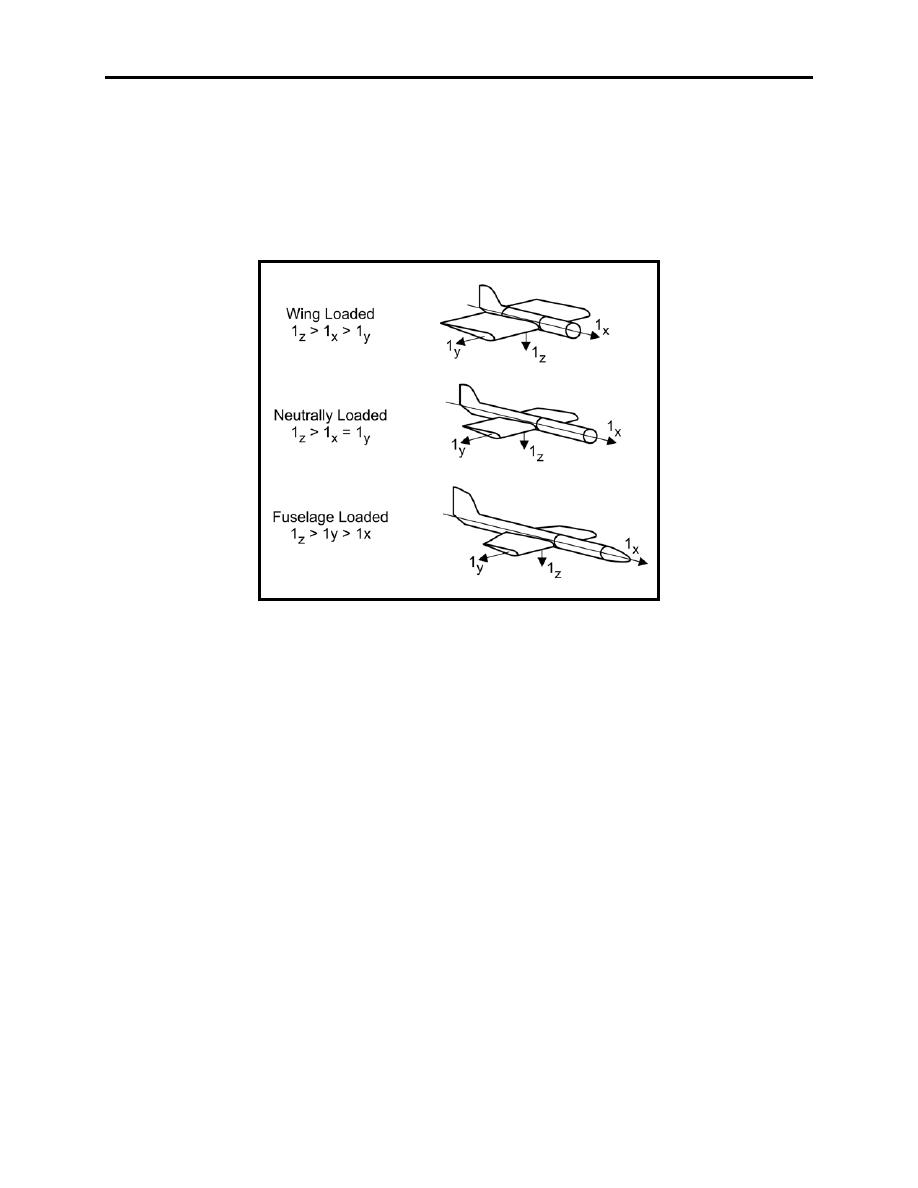 |
|||
|
|
|||
|
|
|||
| ||||||||||
|
|  CHAPTER ONE
T-34C OUT-OF-CONTROL FLIGHT
Mass distribution is a term which describes the construction technique in which the mass of an
airplane is distributed between the fuselage and wings. Roughly assuming aircraft are
"flattened" into the XY plane, the maximum moment of inertia invariably occurs around the yaw
or the Z axis. Depending on the aircraft's mass distribution, 1x is either greater or less than 1y as
shown in Figure 1-7. Wing loaded aircraft tend to spin more nose down (T-34C), while fuselage
loaded aircraft tend to spin flatter (F-14).
Figure 1-7 Mass Distribution
A stall departure usually begins with a yaw, then can involve a pitch up, nose slice, pitch roll
coupling, or some other type of Post-Stall Gyration (PSG) which results in an out-of-control
situation. To recover successfully, the pilot must assess the disorienting situation immediately
using NATOPS OCF Recovery Procedures.
In a flat spin, the horizontal tail may be stalled and ineffective because of the high AOA on the
horizontal stabilizer and elevators. The vertical fin and rudder may also be blanked out with the
rudder ineffective because of a lack of airflow (Figure 1-4). Since a flat spin is primarily a
yawing motion, there is a high sideslip angle with the possibility of a stalled vertical tail as well
and, conversely, an ineffective rudder. If the wing, horizontal stabilizer and vertical tail are all
stalled in a flat spin, there is very little you can do with the flight controls to recover because
they are all ineffective. Fortunately, there is no tendency for the T-34C to spin flat, so you
should never encounter this problem.
Outside visual references cannot be relied upon to determine whether or not you are in a spin.
You must interpret the message the cockpit instruments are sending. In an erect spin, airspeed
will stabilize at a value well within the normal range, 80 - 100 KIAS and AOA will be pegged at
30 units. The altimeter and Vertical Speed Indicator (VSI) will show a rapid rate of descent with
the altimeter possibly lagging behind the actual altitude. While the balance ball gives no useful
indication of spin direction, the turn needle will be fully deflected in the spin direction.
INTRODUCTIONS AND SPINS 1-5
|
|
Privacy Statement - Press Release - Copyright Information. - Contact Us |